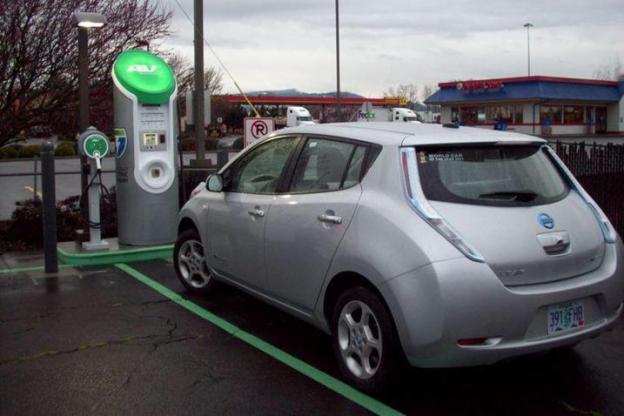 The first phase of the West Coast Electric Highway, which provides charging stations for electric vehicles (EVs), is open. The first phase covers a stretch of I-5 in southern Oregon, but the plan is to build charging stations all along the Pacific coast.
The first phase of the West Coast Electric Highway, which provides charging stations for electric vehicles (EVs), is open. The first phase covers a stretch of I-5 in southern Oregon, but the plan is to build charging stations all along the Pacific coast.
“As the first state in the nation to establish an EV charging infrastructure along a major interstate, Oregon is leading the EV pathway and supporting adoption of the next phase in the evolution of transportation,” said Pat Egan, chair of the Oregon Transportation Commission and vice president of customer and community affairs for Pacific Power in a statement.
The charging stations will be provided by AeroVironment, a California-based company. The stations can provide a full charge in less than 30 minutes, which is longer than it takes to pump gas, but still much shorter than the hours it takes to charge an EV from a wall socket. Charging will be free for a limited time; AeroVironment did not say what the eventual price of a charge will be.
The stations are spaced at 25 mile intervals. Oregon and Washington want to have 40 stations operational by the end of the year. The ultimate goal is to have enough stations to allow EV drivers to go from Mexico to Canada.
The West Coast Electric Highway will definitely make driving less stressful for owners of electric cars. Full EVs like the Nissan Leaf have much shorter ranges than gasoline-powered cars. The Chevy Volt can only reach its epic mpg ratings by running on electric power, again, shortening its range. Consequently, the phrase “range anxiety” is usually attached to EV driving. Nissan and Chevy have always said that most people drive around 50 miles per day, well within their car’s ranges, but EVs will never take off unless owners have the option to drive more.
A highway is a great place to start because it represents a new frontier for electric cars. The Leaf and Volt were built around the assumption that Americans spend the majority of their driving time commuting. That may be true, but they do like to use their cars for fun.
Without a network of charging stations to match gas stations, EVs will never work as road trip cars. If a person can’t use their electric car for family vacations, or to visit friends and relatives that live more than 80 miles away, the car will always be more of a toy than a replacement for traditional gas guzzlers. To be more flexible, drivers still need some gasoline in their lives. Whether filling up their Chevy Volt or buying a second car to augment a Leaf, drivers still have to pay for gas if they want to take a long trip.
With widely available charging stations that can quickly fill cars up with electricity, EV drivers will no longer be encumbered by their vehicles’ range, just like the drivers of gasoline cars. Electric cars may be good for the environment, but they need to be competitive with their petrol-powered forebears in order to win mass appeal.
Editors' Recommendations
- The best level 2 home EV chargers
- How do electric cars work? EV motors and batteries explained
- Tesla’s new million-mile battery could finally make electric cars affordable
- Nissan Leaf gains more driver-assistance features, new infotainment tech for 2020
- Google Maps makes it easier to find EV charging stations via plug type


